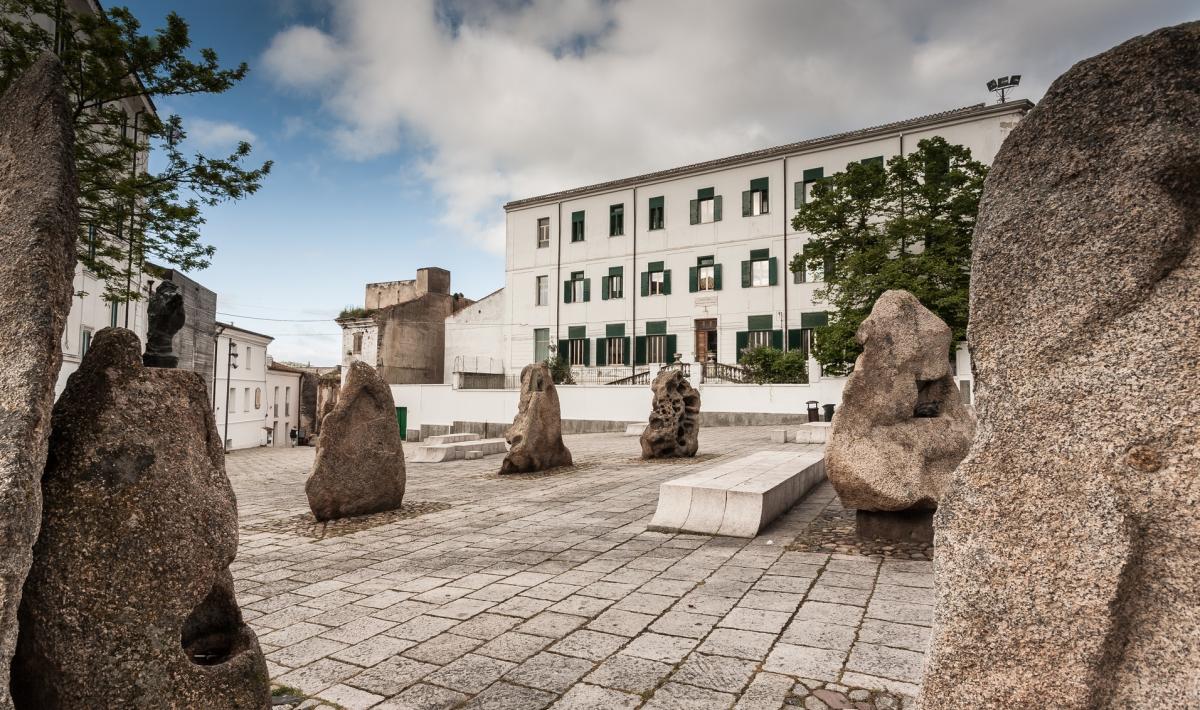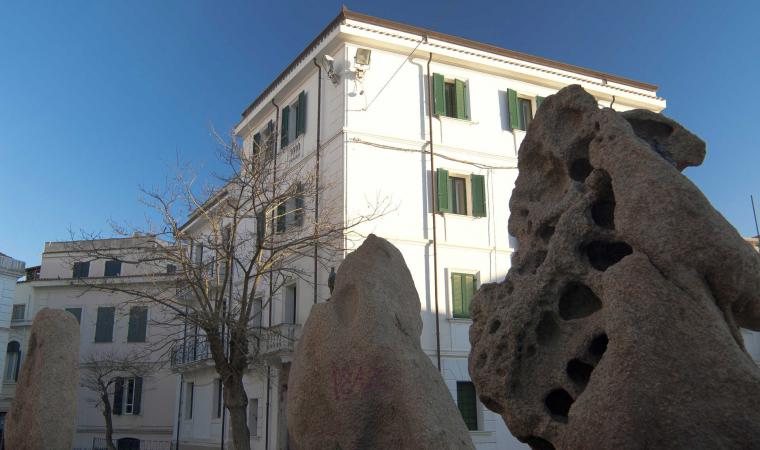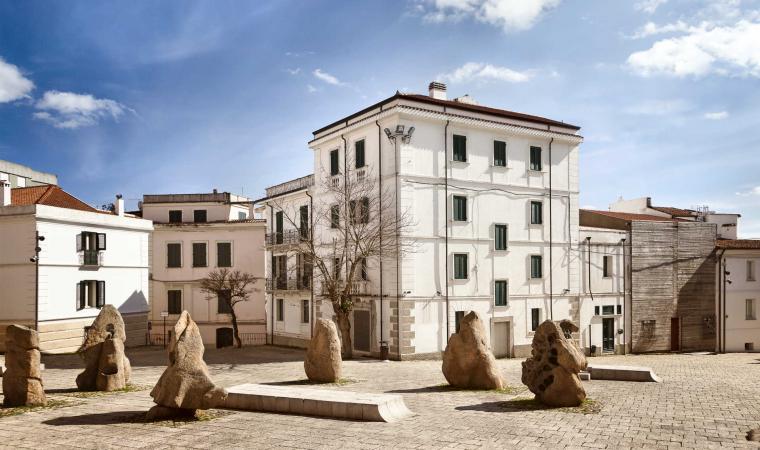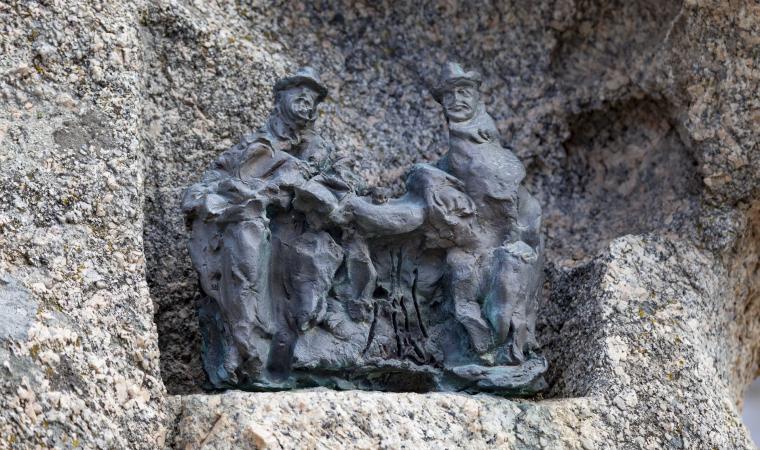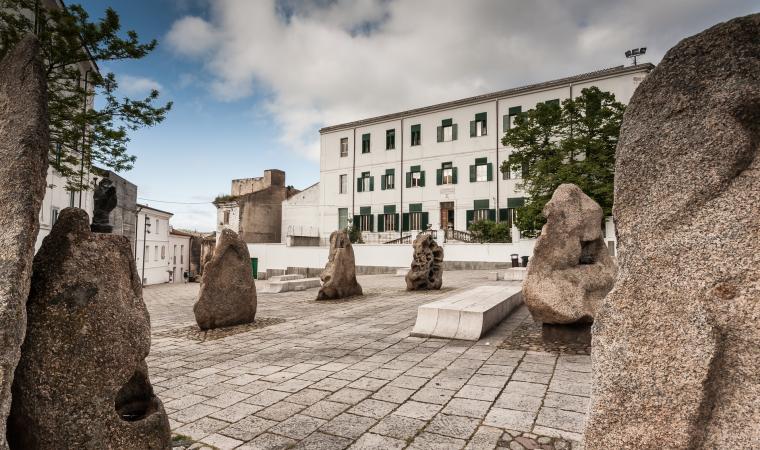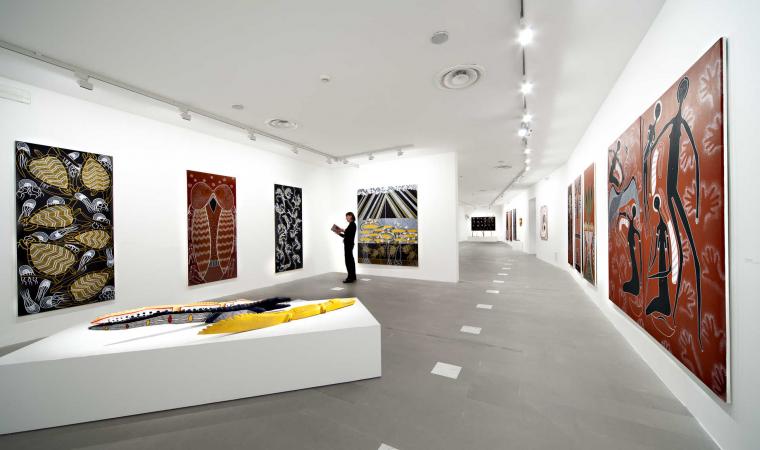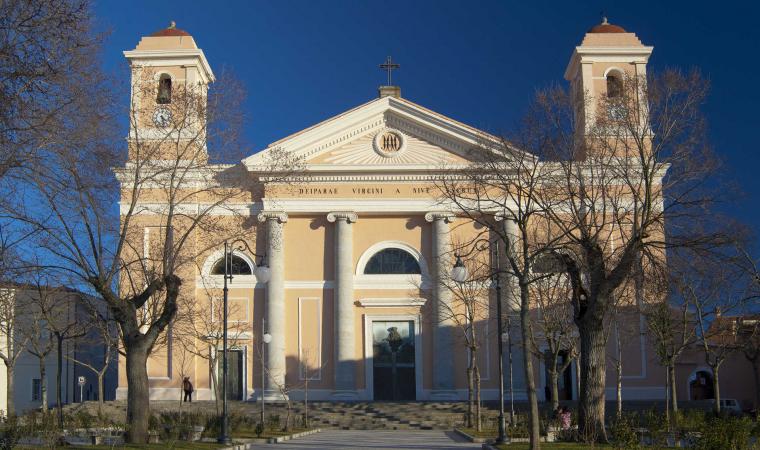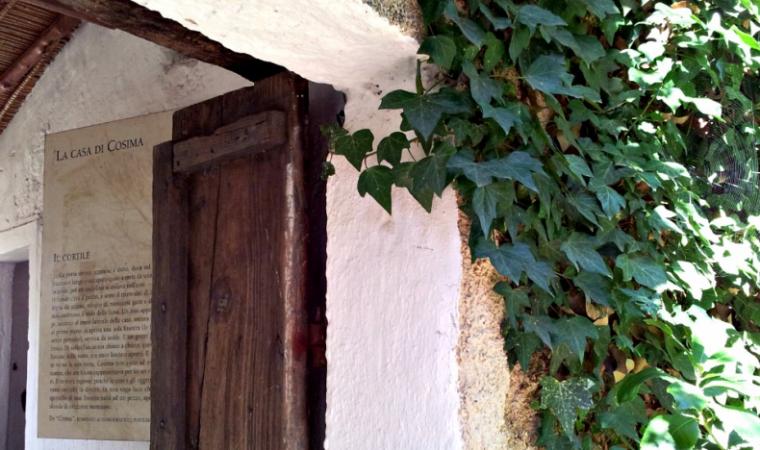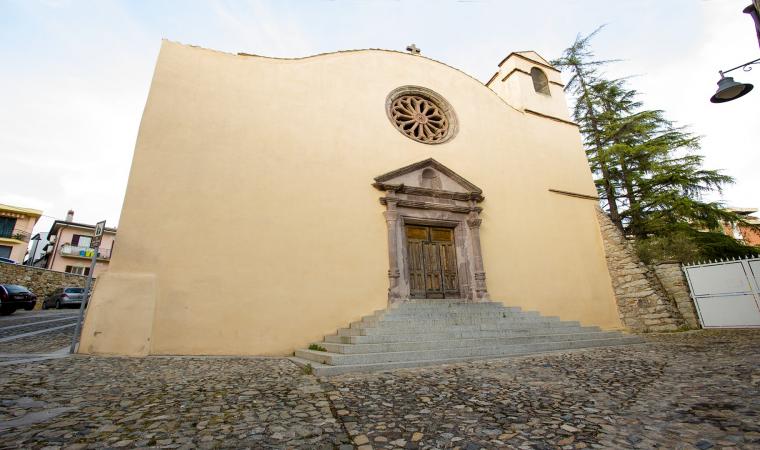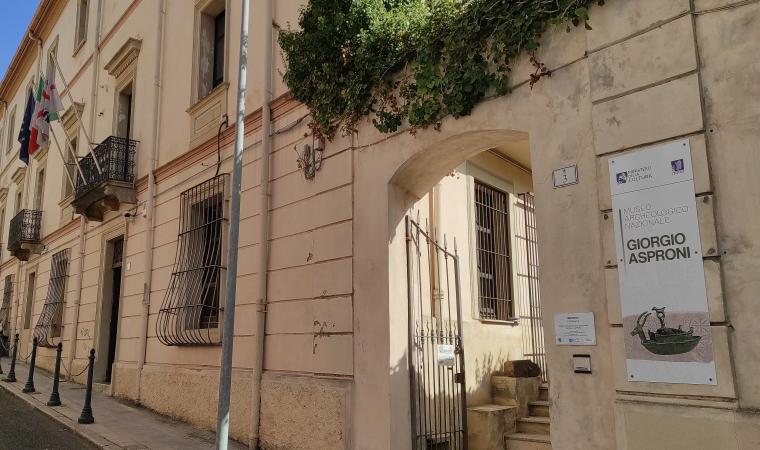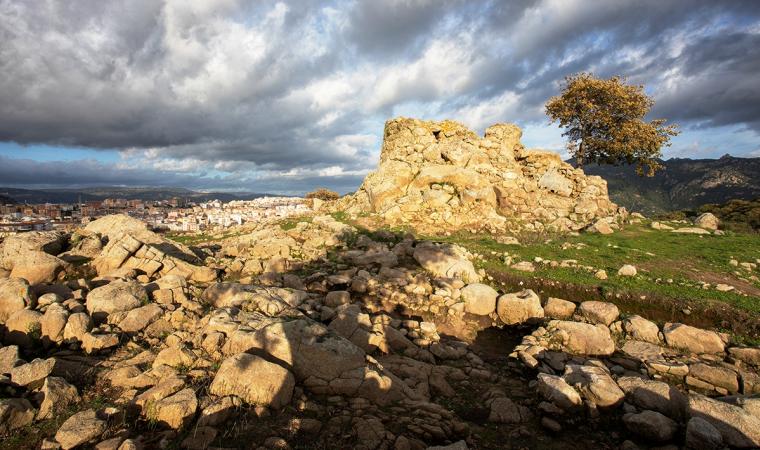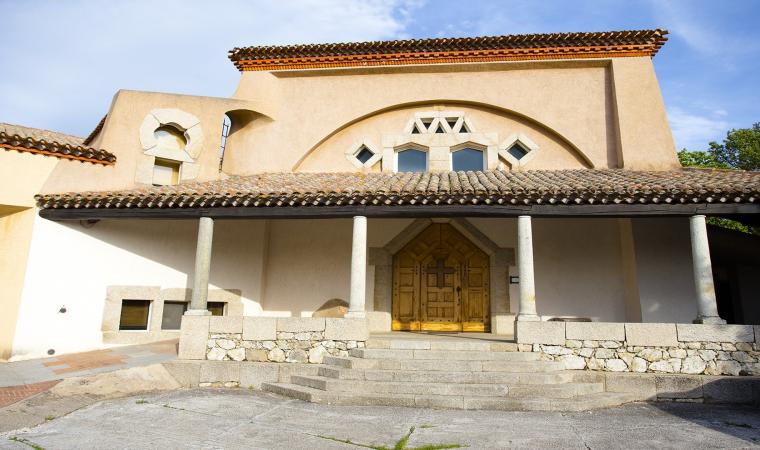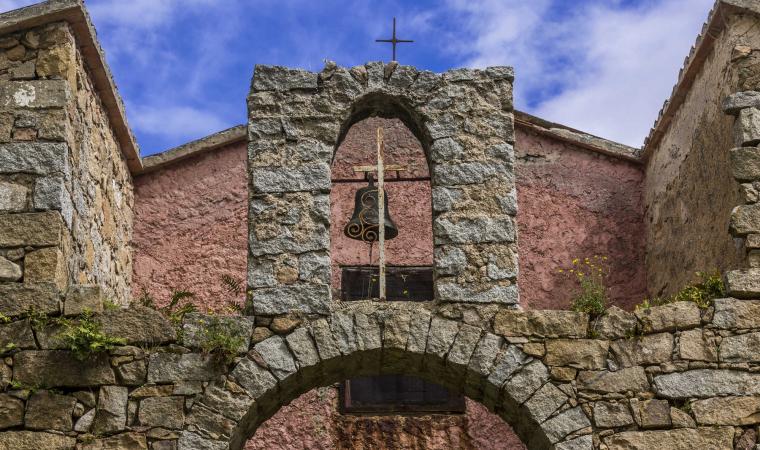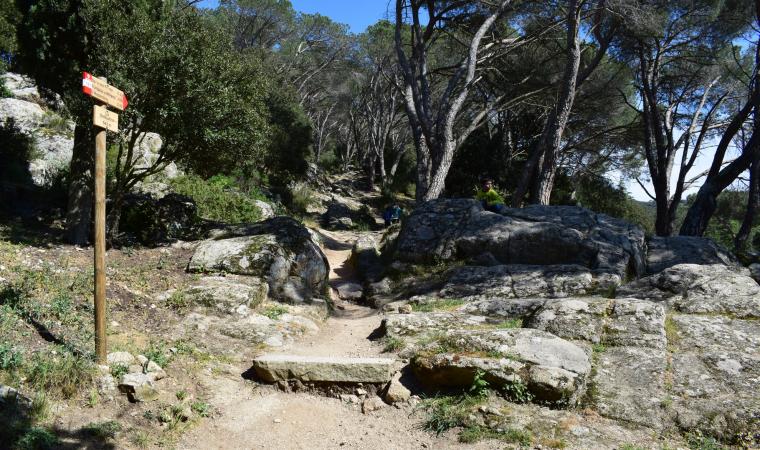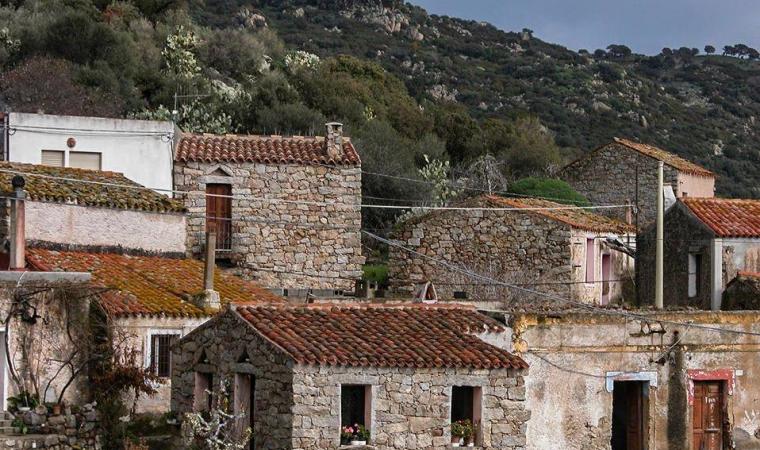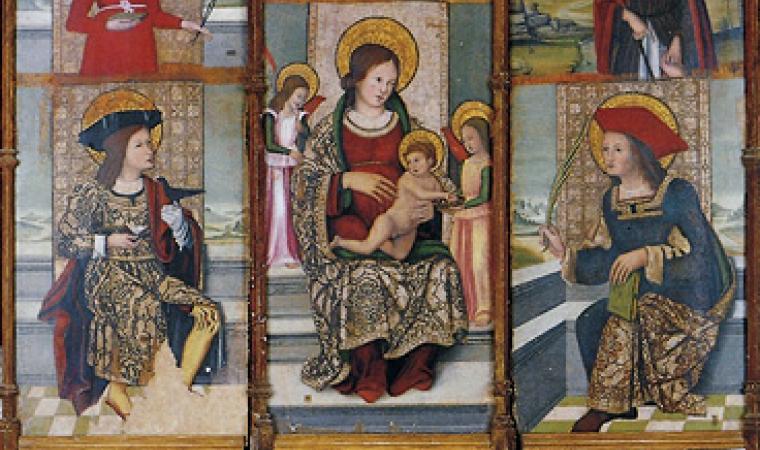When in 1965 the City of Nuoro charged Costantino Nivola with designing a monument to the poet Sebastiano Satta, the sculptor, who had just returned from America where he had known such greats as Le Corbusier and Saarinen, sought inspiration in archaic worlds, in the lifestyles of shepherds. He began with the poet’s personality, which he incarnated and interpreted through small terracotta figures (which were then made into bronze for the final version) in a wide variety of positions and at different moments of life.
The square in the old centre of town was designed by Nivola in 1967.

